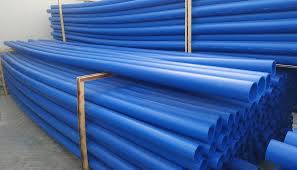Nov . 09, 2024 13:08 Back to list
HDPE Drip Irrigation Pipe Production Experts for Efficient Water Management Solutions
Understanding HDPE Drip Pipe Manufacturing A Comprehensive Overview
In the evolving landscape of agricultural practices and water management, the importance of efficient irrigation systems cannot be overstated. One of the key players in this domain is the high-density polyethylene (HDPE) drip pipe, a preferred choice for modern agricultural needs. This article dives into the intricacies of HDPE drip pipe manufacturing, exploring its benefits, applications, and the processes involved in production.
What is HDPE Drip Pipe?
HDPE drip pipe is a type of irrigation system designed to deliver water directly to the roots of plants, ensuring efficient moisture retention and reduced water wastage. Made from high-density polyethylene, these pipes are known for their durability, resistance to chemicals, and ability to withstand various environmental conditions. The design typically includes small emitters or micro-tubes that control the flow of water, providing a precise irrigation system that maximizes crop yield while minimizing resource use.
Advantages of HDPE Drip Pipe
The benefits of utilizing HDPE drip pipes in agriculture are manifold
1. Water Efficiency HDPE drip irrigation systems can save up to 60% more water compared to conventional irrigation methods. By delivering water directly to the plant roots, it reduces evaporation and runoff.
2. Enhanced Crop Yield With improved water management, crops receive a consistent supply of moisture. This not only leads to healthier plants but can also significantly increase overall productivity.
4. Versatility HDPE drip pipes are suitable for a wide range of crops, from vegetables to fruits and even ornamental plants. This versatility makes them an invaluable tool for various agricultural sectors.
5. Longevity and Resistance HDPE material is resistant to UV rays, chemicals, and physical abrasions, ensuring a long lifespan for the system. These pipes can typically last for decades with proper maintenance.
hdpe drip pipe manufacturer

The Manufacturing Process
The manufacturing of HDPE drip pipes involves a series of steps, each crucial for ensuring high-quality production
1. Raw Material Selection The process begins with selecting high-quality high-density polyethylene resin. This material is sourced from reputable suppliers to guarantee purity and consistency.
2. Extrusion The selected resin is fed into an extruder, where it is heated and melted. This molten polyethylene is then formed into a tube shape through a die.
3. Calibration and Cooling After extrusion, the pipe is calibrated to ensure it meets specified dimensions. It then passes through a cooling process, typically involving water baths or air cooling, which solidifies the shape of the pipe.
4. Emitter Integration For drip pipes, the integration of emitters is essential. This can occur during the extrusion process, with the emitters being built into the pipe, or as a separate step where they are inserted later.
5. Testing Quality control is paramount in the production of HDPE drip pipes. Manufacturers subject the pipes to rigorous testing for durability, water flow rates, and emission uniformity to ensure they meet industry standards.
6. Packaging and Distribution Once manufactured and tested, the pipes are coiled, packaged, and prepared for distribution. Care is taken to ensure that they reach customers in perfect condition, ready for installation.
Conclusion
The rise of HDPE drip pipe systems marks a significant advancement in agricultural irrigation practices. Their numerous benefits, including water efficiency and increased crop yield, combined with a robust manufacturing process, solidify their importance in sustainable farming. As global water resources become increasingly scarce, investing in HDPE drip pipe systems is not merely a choice but a necessity for farmers seeking to enhance productivity while conserving precious water resources. For manufacturers, keeping pace with technological advancements in the production process will ensure they meet the growing demand for this essential agricultural tool, ultimately contributing to a more sustainable future.
-
High-Quality PVC Borehole Pipes Durable & Versatile Pipe Solutions
NewsJul.08,2025
-
High-Quality PVC Perforated Pipes for Efficient Drainage Leading Manufacturers & Factories
NewsJul.08,2025
-
High-Quality PVC Borehole Pipes Durable Pipe Solutions by Leading Manufacturer
NewsJul.08,2025
-
High-Quality PVC Borehole Pipes Reliable PVC Pipe Manufacturer Solutions
NewsJul.07,2025
-
High-Quality UPVC Drain Pipes Durable HDPE & Drain Pipe Solutions
NewsJul.07,2025
-
High-Quality Conduit Pipes & HDPE Conduit Fittings Manufacturer Reliable Factory Supply
NewsJul.06,2025

